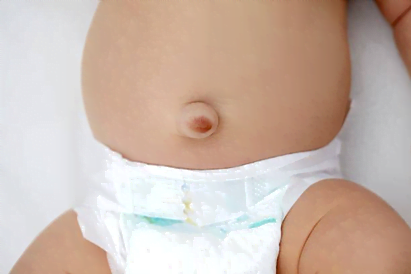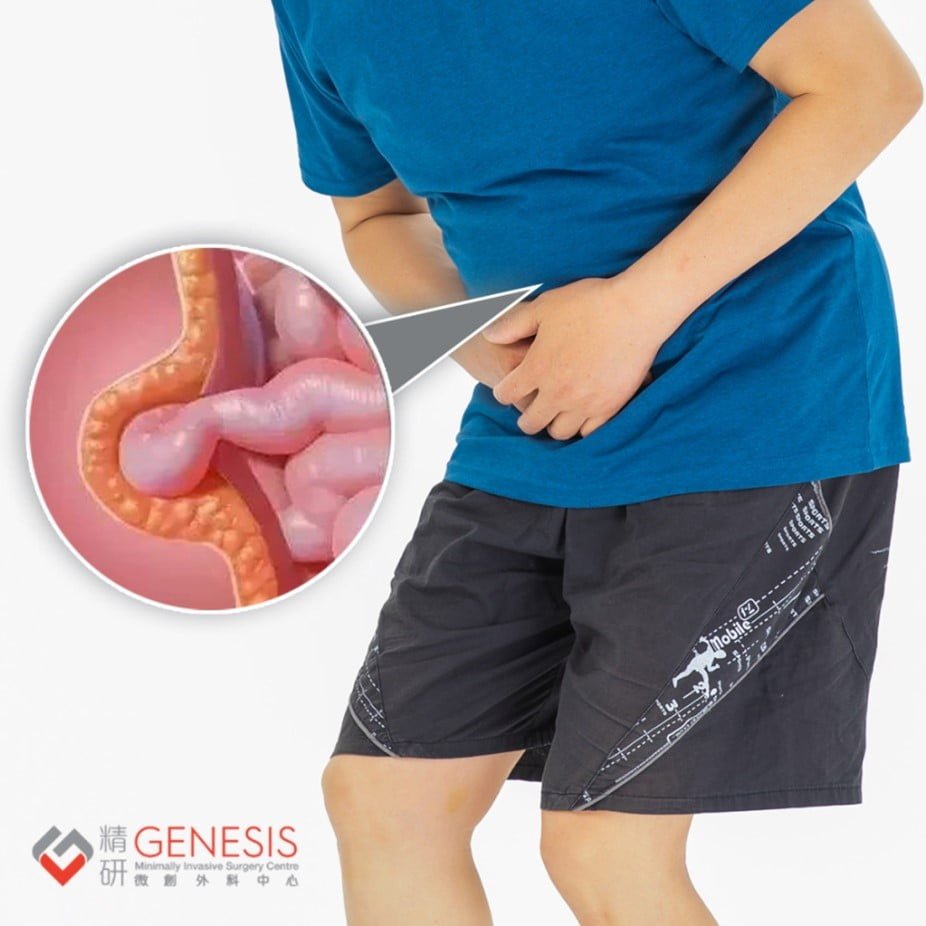Hernia Repair
What is a Hernia?
A hernia occurs when an internal organ or body part protrudes through the wall of muscle or tissue that normally contains it. There are different types of hernia. The most common types in adults include inguinal hernias, paraumbilical hernias and incisional hernias. People of any age or gender may have hernias, but in general men are more likely to develop a hernia because of a difference in anatomy.
Symptoms of Hernias
In the early stages, a hernia usually causes no or very few symptoms. You may notice a swelling or lump in your abdomen or groin, which can be pushed back in or will disappear when lying down. This is usually accompanied by the following symptoms:
- Pain or discomfort when lifting, coughing or standing for a long period of time
- An aching sensation at the bulge
- Swelling of the inner thigh which becomes more obvious when you are upright
- A heavy or dragging sensation in your groin

What Causes a Hernia?
Hernias are caused by a combination of pressure and an opening or weakness of muscle or fascia. The weakened muscles may have been present since birth, or are associated with ageing and repeated strains on the abdominal and groin areas. Such strain may result from lifting heavy objects, obesity, pregnancy, persistent coughing, etc.

How is a Hernia Diagnosed?
A hernia can usually be diagnosed by a physical exam. The doctor will evaluate the degree of swelling by asking the patient to stand and lie down. Sometimes, an ultrasound or CT scan may be performed to confirm the diagnosis or understand the anatomy of the hernia.
How is a Hernia Treated?
Hernias usually do not get better on their own, and surgery is currently the only treatment that can repair hernias. For adults, one of the following three types of surgery may be performed:
| Mesh Repair (Open Surgery) | Mesh Repair (Laparoscopic Surgery) | Autologous Tissue Repair (Open Surgery) | |
| Procedure | A cut of about 4-5 cm is made into the body at the location of the hernia. The protruding tissue is set back in place and the weakened muscle wall is stitched back together. A mesh is implanted in the area to provide extra support. | This involves the same type of mesh repair. However, instead of a cut to the outside of the abdomen or groin, tiny incisions of about 0.5-1 cm are made to allow for the insertion of laparoscopic instruments to complete the procedure. | In this type of repair, the patient’s own tissue is used to close the hernia defect with suture, and no mesh is used. This can prevent the risks of foreign body reaction and infection caused by meshes. |
| Type of Anesthesia | Local / general / spinal anesthesia | General anesthesia (which can only be performed in a hospital) | Local / general / spinal anesthesia |
| Duration | Approx. 1 hour | Approx. 1 hour | Approx. 1 hour |
| Estimated Fee | Approx. HK$27,000 (day surgery centre); approx. HK$30,000-$60,000 (private hospital) | Approx. HK$50,000-$100,000 (private hospital) | Approx. HK$25,000 (day surgery centre); approx. HK$30,000-$60,000 (private hospital) |
Note: The above fees are for reference only. The actual fees vary depending on the patient’s specific conditions and the chosen medical institution.
Risks of Hernia Repair and Recurrence
Regardless of the type of repair used, the recurrence rate of hernia is approximately 1-5%, and the risks involved are similar. However, mesh repairs have the additional risks of infection and chronic pain that the mesh may cause.
The following are potential risks of a hernia repair:
- Wound infection
- Swelling
- Wound pain and numbness
- Damage to nearby organs
- Hematoma
- Difficulty urinating
- Testicular atrophy (rare)
* All content in this website is for informational or educational purposes only. If in doubt, you should consult your doctor or other healthcare professionals.

